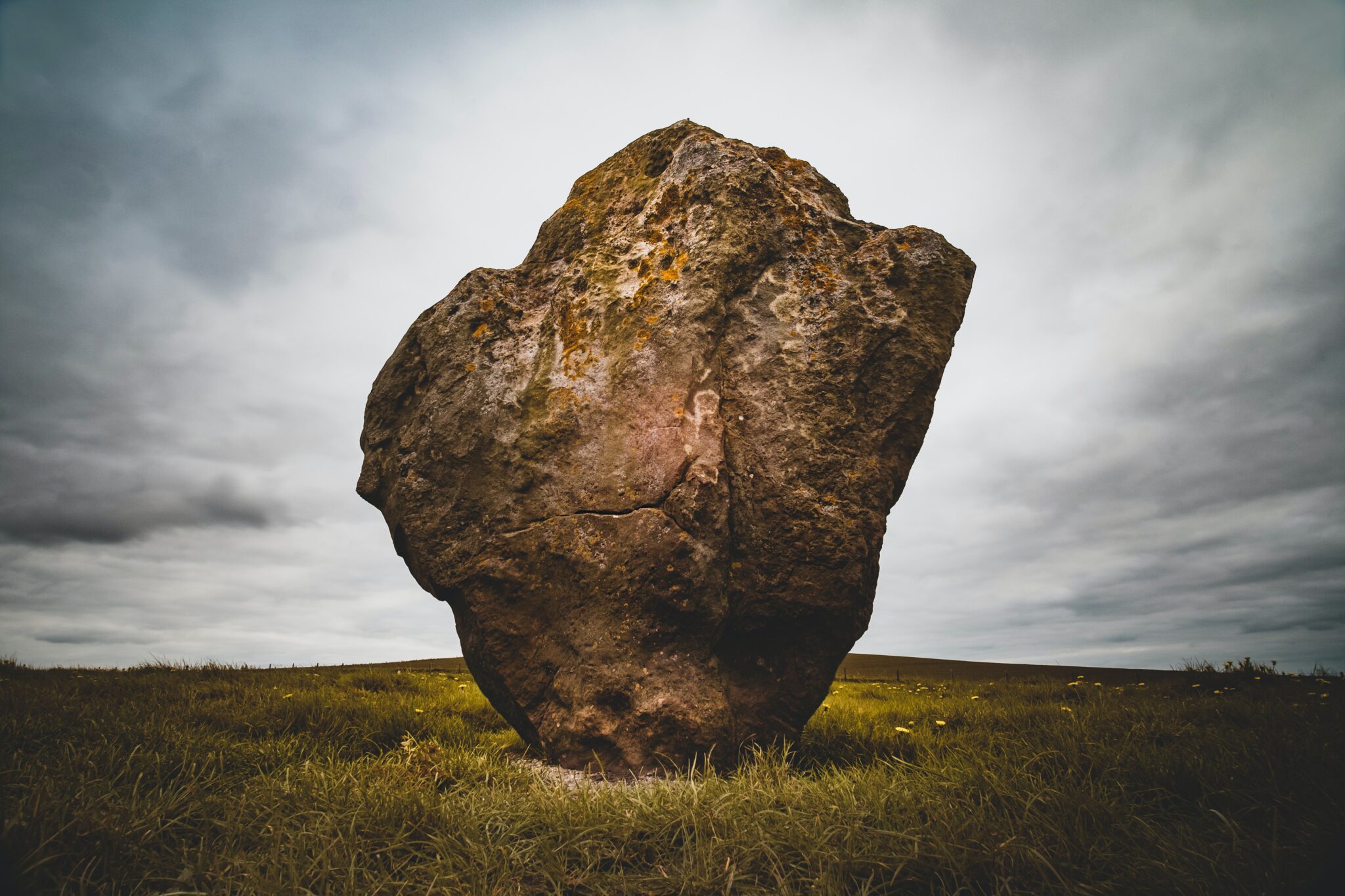Trusting and Fearing the Stone of Israel
- Brian Overholtzer

At the break of dawn Wednesday morning, NASA launched D.A.R.T. (Double Asteroid Redirection Test) from Vandenberg Space Force Base in Southern California into space. D.A.R.T.’s mission is to demonstrate the capability of earth’s technologies to protect the planet from threatening killer asteroids. D.A.R.T. is set to accomplish this mission by navigating toward Didymos, an asteroid over 6 million miles from earth and 780 meters in diameter (that’s half a mile in American). Didymos gets its name from the Greek word which means twin. The asteroid travels with a smaller asteroid that follows in its orbit.
Reading of this epic space mission to fight off an asteroid inspired me to catch up on my killer asteroid sci-fi movies. These typically have the same plot. The only way to avoid a cliché killer asteroid film is to end the movie with the space team failing and the entire planet being destroyed. Nobody wants to watch that. Rather, we want to watch the drama of people working hard against time and against the weight of having humanity’s fate resting on their shoulders. With football-field-sized rocks heading on a collision path with earth, all attention is brought to the massive boulder in the sky. Film writers want the audience to know and feel the fear that such an asteroid is on a path that cannot be moved and is sure to accomplish its mission. Being on the wrong side of this impact is sure devastation and destruction.
While the Bible does mention frightening rocks falling from the sky to collide with Earth (Revelation 8:10–11), Scripture often uses rock imagery to depict both devastation and hope. Several passages such as 2 Samuel 23:3, Isaiah 8:14 and 30:29, Romans 9:33, and 1 Peter 2:8 all refer to God’s salvation and judgment using the language of a massive rock or stone. In a commentary on Genesis, Kent Hughes connects the use of rock imagery in these passages to Genesis 49:24 where Joseph is told by his father Jacob what God will do with his descendants in the last days (Gen 49:1).
Genesis introduces several significant themes that are further developed throughout Scripture. One of these themes is the promised Messiah who would one day crush the head of Satan (Gen 3:15). The prophecy concerning Joseph and his descendants is directly impacted by the promise of the coming Messiah. Since Christ is promised to be the One who will crush Satan, it is fitting for Christ to be referred to as a rock. In Genesis 49:22–26, this rock is said to have been intimately active in Joseph’s life. To highlight the significance of God’s saving power in Joseph’s life, Jacob dramatically recalls the trials Joseph endured (49:22–23). Jacob describes Joseph’s trials of being wronged by his brothers, the cupbearer, and Potiphar’s wife as being attacked by the arrows of the enemy. That Joseph is described as a “fruitful vine” refers to his upright character amid these afflictions.
Joseph’s endurance under bondage and his flight from the temptation of sin are incredible examples of a believer who is not passive in his spiritual life but fights to mortify his sin every day of his life. We must not miss that Joseph was a fighter. The first half of verse 24 describes Joseph’s bow as remaining firm and possessing the skill to wield his weapon. Joseph was a fighter and he fought sin and had many victories. Joseph’s strength was not his own, he relied on power beyond Himself.
Like the rest of verse 24 shows, Joseph trusted in God who is the Mighty One of Jacob, the Shepherd, and the Stone of Israel. Victor Hamilton helpfully summarizes these metaphors in that “The first speaks of his strength, the second of his tenderness and care, the third of his firmness and stability.” Throughout Joseph’s trials, he trusted in a powerful and loving God. To top it off, this powerful and compassionate God is unchanging and reliable. Joseph relied on God who had promised Abraham, Isaac, and Jacob that He would give them as many descendants as the stars in the sky and as the sand on the seashore. God promised his fathers that He would bless their descendants, provide for them, and protect them from their enemies. Joseph took these promises to heart. He fought sin knowing that his power came from the stone of Israel.
The picture of God as the stone of Israel is further developed throughout the Old Testament. In Exodus and Numbers, God provides water from a massive rock. In Deuteronomy 32:4, 15, and 31, God is described as the rock who saves His people Israel. Hannah’s prayer in 1 Samuel 2 praises God who opened her womb and prays back Deuteronomy 32 to God calling Him the rock of salvation and applies this salvation to the Messiah (Anointed One). This rock was rejected by Israel (Isaiah 8:14; Romans 9:33). These all attest to the protection of Christ’s salvation but also of Christ as the rock who destroys. For those who put their trust and faith in Christ, there is hope as mighty as a rock. Those who reject Christ, welcome the judgment that He brings. As God says in Isaiah 28:16 and later again in 1 Peter 2:8, “Therefore thus says the Lord God, “Behold, I am laying in Zion a stone, a tested stone, A costly cornerstone for the foundation, firmly placed. He who believes in it will not be disturbed.” Right now, NASA’s D.A.R.T. is in the void of space with the hope of bringing security and safety for mankind. True hope is not found in the emptiness of space but is found in the imminent presence of Christ, the Stone of Israel.










